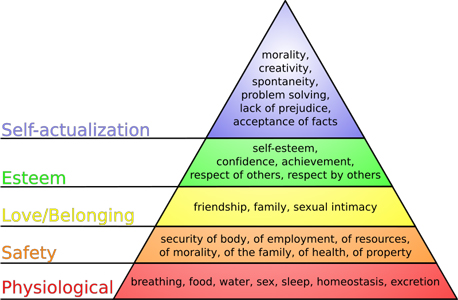![What Does the Word ‘hippie’ Mean?]()
by Tara Joyce | Nov 5, 2008 | Cultural Creativity

photo credit: jdebner
I keep getting called a ‘hippie‘. It seems to be the only word some people can think of to describe me and my husband’s way of life and values. I know I should correct them and say that I am actually a ‘Cultural Creative‘ but I don’t.
What I’m wondering is, what do people mean when they use the word ‘hippie‘? Is it for lack of a better term? Or are they mocking?
It makes me sad to think that people feel the need to outwardly mock conscious living. What makes it so funny? And why does it make people react in a hostile way?

by Tara Joyce | Nov 3, 2008 | Cultural Creativity, My Journey | What's On My Mind
For many, social media is still a fuzzy and foreign concept. It is a new industry and it still has a lot of growing and defining to do. A few weeks ago I sat down with Danny Brown of Press Release PR and discussed what Social Media means to me.
If you’d like to hear my thoughts, I encourage you to read the article, Discussing Social Media with…Tara Joyce.
In the article I talk about:
- How I would define social media
- What my motivation for using it is
- How I think businesses can use it better
- What social media tools I use
- Where I see the future of social media going
![What Does the Word ‘hippie’ Mean?]()
by Tara Joyce | Oct 29, 2008 | Self/Business Growth
I never want to come off smug or ‘elitist’ (it’s my favourite buzz word of the moment) when I write about Cultural Creativity. It is sincerely not my intention. The understanding our subculture shares is only possible because of the circumstances we were born under. Each of us has been fortunate enough to be born into a supportive enough environment that we are able to satisfy our most basic needs.
Because we have satisfied our lower layer needs, such as safety, we are able to focus on self-actualization thus helping us to cultivate a more conscious and aware mind. This mindset change invariably shaped our values into that of a Cultural Creative.
The Five Layers of Human Needs
The Hierarchy of Needs Model by Abraham Maslow

designed by J. Finkelstein
We are in no way better than any one else. We couldn’t possibly think that and truly be self-actualized. Each of us has simply been afforded the opportunity, through God or our own actions, to lead the most conscious life we can. For this reason alone, we need to work together so that every human, at the very least, can satisfy their most basic needs.
Keep this in mind about Maslow’s Hierarchy:
- people do not actually work through each stage one by one – we are much less structured in the way we satisfy our needs
- Maslow’s hierarchy can be arranged differently depending on the culture – for example, in Tibetan Buddhism, self-actualization would be a primary, and thus bottom of the pyramid, need
![What Does the Word ‘hippie’ Mean?]()
by Tara Joyce | Oct 29, 2008 | Cultural Creativity
I love to read. It’s a passion. And now that I have learned a little about innerpreneurship and our Cultural Creative subculture, I am obsessed with learning more. Coupled with my own obsession, I recently had the pleasure of meeting my first mentor, Dr. Mishail Yanakiev, who has been filling my mind daily with information related to our movement.
The more I read, the more I am sure that there is a great cultural transformation underway. Slowly, people are changing their thinking. It is evident everywhere and it gives me hope.
People must have the desire to change, we can not make them. All we can do is lead by example and educate. Below are leading ideas in Social Science and Business, ideas that are spreading, ideas that further validate that our way of thinking is the future.
Changes in Social Science
Positive Psychology
Positive Psychology is a new branch of psychology that focuses on the empirical study of such things as positive emotions, strengths-based character, and healthy institutions. It’s purpose is to make the world a happier place, parallel to the way clinical psychologists have made the world a less unhappy place.
Penn State University and Dr. Martin Seligman are at the forefront of this new movement in Psychology. Their Authentic Happiness website has great resources if you want to learn more about this new field and has an extensive number of free questionnaires covering emotions, meaning, engagement and life satisfaction.
The questionnaires measure character strengths and aspects of happiness. For each one you take, the site keeps a record of your scores, so that you can return later and see how far you’ve progressed.
Penn State is also the first university in the world to offer a Masters in Applied Positive Psychology. If you feel like helping with their research they are currently looking for participants for their Postive Psychology research. Participation in the studies can be done completely online.
Another fascinating resource on Positive Psychology is BBC News’ site on The Happiness Formula.
Changes in Business
Systems Thinking
The old standard of business thinking (and what is still taught in many business schools, including the one I attended) is reductionistic and analytical. You are taught to deal with complexity by dividing things into parts for the purpose of making them easier to manage and control.
Example: A communications provider designs their business by creating business units that separately handle wireless, television, and publishing. The principle criterion used to evaluate a unit is that unit’s individual success. Each unit runs separately and has separate departments. Very little is interconnected.
Systems thinking is the growing standard in business thinking that is holistic and synthetic. Progressive business schools throughout the world are teaching young minds to deal with complexity by looking at the system as a whole and evaluating the inter-dependent parts based upon how well they serve the overall purpose of the system. This type of thinking is about the relationships between the parts.
Example: An architect designs a house by first sketches the house as a whole and then puts rooms into it. The principal criterion he employs in evaluating a room is what effect it has on the whole. He is even willing to make a room worse if doing so will make the house better.
Design Thinking
Synonymous with synthetic thinking (look at the whole, not the parts), and thus a component of systems thinking, design thinking is at the tipping point of replacing analytical thinking as the preferred way of reasoning in business. This is, of course, due to rising creative class and the growing emphasis on creativity and knowledge in business. Many argue that in order to develop, communicate, and pursue an effective strategy businesses must think more like designers.
There are now over 60 universities world-wide offering combined degrees in design and business.
The Desire to Change Is Growing
The status quo is being challenged all around us. Credit globalization, credit global warming, credit overpopulation, it doesn’t matter. The fact is, the world is changing. And people will have to adapt to these changes in order to survive. This idea alone gives me great hope, as the desire to survive will create the desire to change.
The harder I look, the more Cultural Creative values, lifestyles and world-views I see reshaping our culture. What other areas do you notice changing?
![What Does the Word ‘hippie’ Mean?]()
by Tara Joyce | Oct 23, 2008 | Innerpreneurship

Creative Commons License photo credit: doug88888
- Many of us embraced innerpreneurialism after first trying (and disliking) more conventional careers and professions.
- We are credited with the rise in popularity of cause marketing.
The idea that businesses should give back has become more mainstream because of our influence on society.
- Innerpreneurs are credited with creating New Urbanism, a social movement against suburbanism.
In the heart of small cities like Portland, Oregon new communities are being built by innerpreneurs. In them, the houses are closer together, there are sidewalks and bike lanes and the community is a mixture of residential, office and retail. Glenwood Park in Atlanta, Georgia is a thriving example of what the New Urbanism movement has created.
- Sabbaticals are popular with innerpreneurs who can’t change careers completely.
Sabbaticals give part-time innerpreneurs a chance to explore parts of themselves that their career does not allow.
- Popular innerpreneurial pursuits include: life coach counseling, blogging, athletic challenges, volunteering and vacations with meaning.
- Notable innerpreneurs include:
Jaime Clarke – Adveturer-Lecturer
Nina Planck – Food Writer and Expert on Farmers Markets
Dr. Joseph Helms – Medical Innovator
Gary Hirshberg – CE-Yo of Stoneyfield Farm
Carlo Petrini – Founder of the Slow Food Movement
Jack Cogen – Environmental Financier
- While Cultural Creatives are members of the ‘creative class’, we are not the ‘creative class’.
The ‘creative class’ defines those who are employed in fields ranging from science and engineering to architecture and design, and from arts, music, and entertainment to the creative professions law, business and finance, health care and related fields. This class of people is defined by what they do, not by their world-views.
- A defining characteristic of Innerpreneurs, and Cultural Creatives in general, is our ability to see ourselves as part of something bigger.
We see that everything relates as an interwoven piece of nature. This way of thinking is called Systems Thinking.
- 60% of Cultural Creatives are women.
- There are two branches of Cultural Creative’s – Green CC’s and Core CC’s.
We are pretty much split down the middle with there being slightly more Green CC’s. Core CC’s are much more fascinated by personal growth and spirituality, as well as social activism.Green CC’s values are much more extroverted and less intensely held. And they tend to have a more traditional religious point of view. What we both share is our desire to make things better, both socially and environmentally. Innerpreneurs are members of the Core CC branch. While social entrepreneurs are members of the Green CC branch.
- We are no more liberal or conservative, left or right than the average Westerner.
We are what could best be described as retro-progressive, a combination of both ideals. This very fact will be our greatest tool in healing the current culture war between Modern and Traditional.
- A fair number of us belong to religious conservative denominations.
While most nonstandard believers of Eastern religions and spirituality are CC’s, they are a minority in the subculture. We are also Christians, Jews, Muslims, Buddhists, Chrisitan Scientists and agnotistics.
- Each of us followed the same 4 steps to becoming a Cultural Creative.
- We are not the first counterculture to defect from Modernism.
The Traditionals were the first, beginning their movement around 1870. This is interesting as it is contrary to the claims of Traditionals. They argue that Moderns were the ones who departed from what was conventional.
- Our movement is a healing movement.
We desire for things to be made whole. For mankind to wake up to their true desires.






